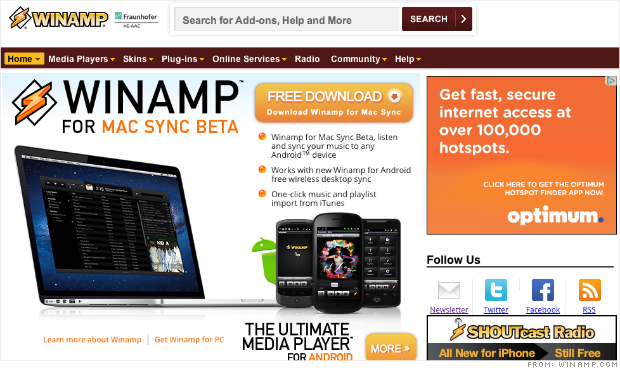The Motley Fool's health-care show Market Checkup focuses this week on obesity, one of America's largest health-care concerns. Recently classified as a disease, obesity leads to serious health problems including diabetes, heart disease, and stroke. Currently 35% of adults in the U.S. are classified as obese, but more troubling, one out of three children is as well. All told, obesity adds $190 billion in medical costs to the system, but efforts to tackle this growing problem are increasing.
In this video, health-care analysts David Williamson and Max Macaluso discuss Arena Pharmaceuticals, maker of Belviq, the first new obesity drug approved in more than a decade. Arena just launched Belviq after a long period of DEA scheduling, but can it avoid the pitfalls and struggles that have weighed heavily on its chief competitor? Watch and find out.
Rising health-care costs continue to be a hotly debated topic, and even legendary investor Warren Buffett called this trend "the tapeworm that's eating at American competitiveness." To learn more about what's happening to the health-care system -- and how to potentially profit from this trend --�click here�for free, immediate access.
5 Best Medical Stocks To Own Right Now: NeoStem Inc (NBS)
NeoStem, Inc., incorporated on September 18, 1980, operates in cellular therapy industry. Cellular therapy addresses the process by which new cells are introduced into a tissue to prevent or treat disease, or regenerate damaged or aged tissue, and consists of a separate therapeutic technology platform in addition to pharmaceuticals, biologics and medical devices. The Company�� business model includes the development of novel cell therapy products, as well as operating a contract development and manufacturing organization (CDMO) providing services to others in the regenerative medicine industry. Progenitor Cell Therapy, LLC, the Company�� wholly owned subsidiary (PCT), is a CDMO in the cellular therapy industry. PCT has provided pre-clinical and clinical current Good Manufacturing Practice (cGMP) development and manufacturing services to over 100 clients advancing regenerative medicine product candidates through rigorous quality standards all the way through to human testing.
PCT has two cGMP, cell therapy research, development, and manufacturing facilities in New Jersey and California, serving the cell therapy community with integrated and regulatory compliant distribution capabilities. Its core competencies in the cellular therapy industry include manufacturing of cell therapy-based products, product and process development, cell and tissue processing, regulatory support, storage, distribution and delivery and consulting services. The Company�� wholly-owned subsidiary, Amorcyte, LLC (Amorcyte) is developing its own cell therapy, AMR-001, for the treatment of cardiovascular disease. AMR-001 represents its clinically advanced therapeutic product candidate and enrollment for its Phase II PreSERVE clinical trial to investigate AMR-001's safety and efficacy in preserving heart function after a heart attack in a particular type of post Acute Myocardial Infarction (AMI) patients.
Through the Company�� subsidiary, Athelos Corporation (Athelos), the Company is collaborating w! ith Becton-Dickinson in early stage clinical development of a therapy utilizing T-cells, collaborating for autoimmune and inflammatory conditions, including but not limited to, graft vs. host disease, type 1 diabetes, steroid resistant asthma, lupus, multiple sclerosis and solid organ transplant rejection. The Company�� pre-clinical assets include its Very Small Embryonic Like (VSEL) Technology platform. The Company has basic research and development capabilities, manufacturing facilities on both the east and west coast of the United States.
Advisors' Opinion: - [By Monica Gerson]
NeoStem (NYSE: NBS) priced an underwritten public offering of 5,000,000 shares of common stock at an offering price of $7.00 per share. NeoStem shares dipped 9.44% to $7.10 in after-hours trading.
- [By John Udovich]
Summer and the slow news for the market that usually comes with it�is over with and both stem cell researchers or small� cap stem cell stocks like Advanced Cell Technology, Inc (OTCBB: ACTC), Neuralstem, Inc (NYSEMKT: CUR), NeoStem Inc (NASDAQ: NBS), International Stem Cell Corp (OTCMKTS: ISCO)�and BioRestorative Therapies (OTCBB: BRTX) having news for investors and traders alike. Consider the following:
- [By John Udovich]
From stem cell burgers to earnings reports, the stem cell industry and small cap players in it like NeoStem Inc (NASDAQ: NBS), International Stem Cell Corp (OTCMKTS: ISCO) and BioRestorative Therapies (OTCBB: BRTX) have been producing some news lately that has probably been overlooked by investors and traders alike given its August. Nevertheless, you might want to pay attention to the following stem cell news:
5 Best Medical Stocks To Own Right Now: Paradigm Medical Industries Inc (PDMI)
Paradigm Medical Industries, Inc., incorporated in October 1989, develops, manufactures, markets and sells ophthalmic diagnostic instrumentation and related accessories, including disposable products. The diagnostic products that the Company manufacturers, markets and sells consist of the P60 UBM Ultrasound Biomicroscope, two perimeters - the LD 400 and the TKS 5000, and the Blood Flow Analyzer. The diagnostic products that the Company markets and sells, which are manufactured by its Italian partner, Costruzione Strumenti Oftalmici srl (CSO), are the Paramax, corneal topographers - the Paravue 300 and the Surveyor 500, and the Paracam 1000. The P60 UBM Ultrasound biomicroscope is the third-generation of UBM devices. The CSO product to be distributed and sold by the Company is the Paramax. Other CSO products to be sold by the Company are the Paravue 300, a corneal topographer with the ability to display live images on a computer monitor; the Surveyor 500, a corneal topographer with a rotating Scheimpflug camera with placido disk, and the Paracam 1000, a specular microscope for endothelial cell evaluations.
Diagnostic Eye Care Products
The Company�� diagnostic eye care products include blood flow analyzer, dicon perimeters, P60 UBM ultrasound biomicroscopes, and Paramax and other products manufactured by Costruzione Strumenti Oftalmici srl. The blood flow analyzer device measures not only intraocular pressure but also pulsatile ocular blood flow, the reduction of which may cause nerve fiber bundle death through oxygen deprivation thus resulting in visual field loss associated with glaucoma. The Company's blood flow analyzer is a portable automated in-office system that presents a method for ocular blood flow testing for the ophthalmic and optometric practitioner. The device is a portable desktop system that utilizes an Air Membrane Applanation Probe (AMAP), which can be attached to any model of standard examination slit lamp, which is then placed on the cornea of the patient! 's eye to measure the intraocular pressure within the eye.
Dicon perimeters consist of the LD 400 and the TKS 5000, and software consisting of Field Lin FieldView and Advanced Field View. Perimeters are used to determine retinal sensitivity testing the visual pathway. Perimetry is reimbursable worldwide. The Dicon perimeters feature kinetic fixation and voice synthesis in 27 different languages. The LD 400FT, or Fast Threshold Autoperimeter, is the successor to the LD 400. The device is an autoperimeter used to measure patient visual fields. The LD 400FT is identical in hardware to the LD 400 but it uses new software to enable a threshold test. The P60 biomicroscope represents the third-generation of UBM devices. The Paramax is to be sold in North America on an exclusive basis. The Paramax performs tests for the early screening and follow up of pathologies, such as glaucoma, age related macular degeneration, vascular retinal degeneration, and other optic nerve diseases.
Surgical Products
The Company�� surgical products include Precisionist Thirty Thousand, Ocular Surgery Workstation and Photon Laser System. The Precisionist Thirty Thousand is the Company's core phaco surgical technology. As of December 31, 2009, the Precisionist is not manufactured by the Company. The system features a graphic color display and on board computer and graphic user interface linked to a soft key membrane panel for flexible programmable operation. The system provides real-time on-the-fly adjustment capabilities for each surgical parameter during the surgical procedure for high-volume applications. In addition, the Precisionist provides one hundred pre-programmable surgery setups, with a second level of subprogrammed custom modes within each major surgical screen (ultrasound phaco and
irrigation/aspiration modes).
The Ocular Surgery Workstation comprises the base system of the Precisionist
Thirty Thousand and is the first system, to the Company's knowledge,! which us! es the expansive capabilities of today's advanced computer technology to offer seamless open architecture expandability of the system hardware and software modules. The Workstation utilizes an embedded open architecture computer developed for the Company and controlled by a software system developed by the Company that interfaces with all components of the system. Ultrasound, fluidics (irrigation), aspiration, venting, coagulation and anterior vitrectomy (pneumatic) are all included in the base model.
The Photon laser cataract system is designed to be installed as a seamless plug-in upgrade or add-on to the Company's Precisionist' Ocular Surgery Workstation. The Photon laser utilizes the on board microprocessor computer of the Workstation to generate short pulse laser energy developed through the patented LCP to targeted cataract tissue inside the eye, while simultaneously irrigating the eye and aspirating the diseased cataract tissue from the eye. In addition to the cataract surgery equipment, the Company's surgical systems are designed to utilize accessory instruments and disposables. These include replacement ultrasound tips, sleeves, tubing sets and fluidics packs, instrument drapes and laser cataract probes. The Company focuses on expanding its disposable accessories as it penetrates the cataract surgery market and expands the treatment applications for its Workstation.
The Company competes with Sonomed, Tomey, Nidek, OTI and Quantel.
5 Best Value Stocks To Own Right Now: Quintiles Transnational Holdings Inc (Q)
Quintiles Transnational Holdings Inc. is a provider of biopharmaceutical development services and commercial outsourcing services. The Company operates in two segments: Product Development and Integrated Healthcare Services. The Company�� Product Development segment operates as a contract research organization (CRO) focused primarily on Phase II-IV clinical trials and associated laboratory and analytical activities. The Company�� Integrated Healthcare Services segment is a global commercial pharmaceutical sales and service organizations and Integrated Healthcare Services provides a range of services, including commercial services, such as providing contract pharmaceutical sales forces in geographic markets, as well as healthcare business services for the healthcare sector, such as outcome-based and payer and provider services. In August 2012, it acquired Expression Analysis, Inc.
Product Development
Product Development provides services and that allow biopharmaceutical companies to outsource the clinical development process from first in man trials to post-launch monitoring. The Company�� service offering provides the support and functional necessary at each stage of development, as well as the systems and analytical capabilities. Product Development consists of clinical solutions and services and consulting. Clinical solutions and services provides services necessary to develop biopharmaceutical products, including project management and clinical monitoring functions for conducting multi-site trials (generally Phase II-IV) (core clinical) and clinical trial support services that improve clinical trial decision making and include global laboratories, data management, biostatistical, safety and pharmacovigilance, and early clinical development trials, and strategic planning and design services that improve decisions and performance. Consulting provides strategy and management consulting services based on life science and advanced analytics, as well as regulatory and comp! liance consulting services.
The Company competes with Covance, Inc., Pharmaceutical Product Development, Inc., PAREXEL International Corporation, ICON plc, inVentiv Health, Inc. (inVentive), INC Research and PRA International.
Integrated Healthcare Services
Integrated Healthcare Services provides the healthcare industry with both geographic presence and commercial capabilities. The Company�� commercialization services are designed to accelerate the commercial of biopharmaceutical and other health-related products. Service offerings include commercial services (sales representatives, strategy, marketing communications and other areas related to commercialization), outcome research (drug therapy analysis, real-world research and evidence-based medicine, including research studies to prove a drug�� value) and payer and provider services comparative and cost-effectiveness research capabilities, clinical management analytics, decision support services, medication adherence and health outcome optimization services, and Web-based systems for measuring quality improvement.
The Company competes with inVentiv, PDI, Inc., Publicis Selling Solutions, United Drug plc, EPS Corporation and CMIC HOLDINGS Co., Ltd.
5 Best Medical Stocks To Own Right Now: OncoSec Medical Inc (ONCS)
OncoSec Medical Incorporated, incorporated on February 8, 2008, is an emerging drug-medical device company. The Company focused on designing, developing and commercializing medical approaches for the treatment of solid cancers. In March 2011, the Company acquired from Inovio Pharmaceuticals, Inc. (Inovio) certain assets related to the use of drug-medical device combination products for the treatment of different cancers.
The Company�� acquired assets relate to certain non-deoxyribonucleic acid (DNA) vaccine technology and property relating to selective tumor ablation technologies, which it refers to as the OncoSec Medical System (OMS), a therapy which uses an electroporation device to facilitate delivery of chemotherapy agents, or nucleic acids encoding cytokines, into tumors and/or surrounding tissue for the treatment and diagnosis of various cancers. As of January 24, 2012, the Company had not generated any revenue from operations.
Advisors' Opinion: - [By James E. Brumley]
If you're looking for the next big biotech breakout stock, then OncoSec Medical Inc. (OTCMKTS:ONCS) deserves a place on your watchlist. This volatile cancer play has been down more than up 2011, but if you look closely at a long-term chart of ONCS, you may find it's already wiggled its way into a new uptrend. And, it may be only a matter of time before the bullish fireworks start to go off.
- [By Bio-Wire]
Another company that has benefitted from Inovio�� newfound attention is OncoSec Medical (OTC: ONCS) ��a newer ��ffshoot�� company that uses a similar but distinctly different electroporation device known as the OncoSec Medical System (OMS) that is based on Inovio�� technology. The specific amplitude and frequency of the OMS electroporation is calibrated such that plasmid delivery into solid tumor masses is fully optimized, while CELLECTRA electroporation is less specialized and focus more on the vaccination of skin cells. The cross-license agreement made between Inovio and Oncosec also covers the two devices for their distinctly different applications.
5 Best Medical Stocks To Own Right Now: Prima BioMed Ltd (PRR)
Prima BioMed Ltd is a biotechnology company is engaged in the development and commercialization of medical therapies with a focus on oncology. Its product candidates in development include Cvac, an autologous dendritic cell vaccine for ovarian cancer, monoclonal antibodies for multiple tumour types, and an oral formulation for the human papilloma virus (HPV), vaccine. Its product candidate Cvac is a dendritic cell therapy, for which it is conducting a Phase IIb trial for the treatment of ovarian cancer. Cvac is designed to target the tumour antigen mucin-1, which is expressed at high levels on different tumour types. It also has two preclinical product development programs. In May 2011, Prima BioMed GmbH, a 100 % owned subsidiary of Prima BioMed Ltd, was incorporated in Germany. In May 2011, Prima BioMed Middle East FZLLC, a 100 % owned subsidiary of Prima BioMed Ltd, was incorporated in the United Arab Emirates.















 Popular Posts: Is the Oracle Right About XOM?4 Ways to Cash In on Energy Growth in ChinaSDRL – One of the Best Dividend Stocks Just Got Even Better Recent Posts: Buy Oil Stocks on the Iranian Nuclear Deal SDRL – One of the Best Dividend Stocks Just Got Even Better 5 Sweet Energy Picks From T. Boone Pickens View All Posts
Popular Posts: Is the Oracle Right About XOM?4 Ways to Cash In on Energy Growth in ChinaSDRL – One of the Best Dividend Stocks Just Got Even Better Recent Posts: Buy Oil Stocks on the Iranian Nuclear Deal SDRL – One of the Best Dividend Stocks Just Got Even Better 5 Sweet Energy Picks From T. Boone Pickens View All Posts  After decades of geopolitical tension in Iran, the situation seems to be getting a bit less tense. Over the weekend, Iran — along with nations in the G6 — signed an agreement to curtail is nuclear ambitions and its enrichment projects. Those controversial programs were thought to be part of a larger nuclear weapons agenda.
After decades of geopolitical tension in Iran, the situation seems to be getting a bit less tense. Over the weekend, Iran — along with nations in the G6 — signed an agreement to curtail is nuclear ambitions and its enrichment projects. Those controversial programs were thought to be part of a larger nuclear weapons agenda. Popular Posts: 8 “Triple A” Stocks to Buy5 Biotechnology Stocks to Buy Now17 Oil and Gas Stocks to Sell Now Recent Posts: 5 Stocks With Crummy Earnings Growth — KWK GNK SOL CRK LM 5 Stocks With Bad Cash Flow — KWK STP ATPG EDN AONE 5 Stocks With Strong Cash Flow — KT XIN ZA MIL GSL View All Posts
Popular Posts: 8 “Triple A” Stocks to Buy5 Biotechnology Stocks to Buy Now17 Oil and Gas Stocks to Sell Now Recent Posts: 5 Stocks With Crummy Earnings Growth — KWK GNK SOL CRK LM 5 Stocks With Bad Cash Flow — KWK STP ATPG EDN AONE 5 Stocks With Strong Cash Flow — KT XIN ZA MIL GSL View All Posts 
 There are reports of four fatalities in the Metro North train derailment near Spuyten Duyvil Station in the Bronx, N.Y. Authorities are also reporting more than 60 injured. Robert Deutsch, USA TODAYFullscreen
There are reports of four fatalities in the Metro North train derailment near Spuyten Duyvil Station in the Bronx, N.Y. Authorities are also reporting more than 60 injured. Robert Deutsch, USA TODAYFullscreen Commuters, who were on a train that derailed in the Bronx borough of New York, are seen after being rescued. Timothy Clary, AFP/Getty ImagesFullscreen
Commuters, who were on a train that derailed in the Bronx borough of New York, are seen after being rescued. Timothy Clary, AFP/Getty ImagesFullscreen The scene of the early-morning Metro North train derailment in the Bronx, N.Y. along the Hudson River. Robert Deutsch, USA TODAYFullscreen
The scene of the early-morning Metro North train derailment in the Bronx, N.Y. along the Hudson River. Robert Deutsch, USA TODAYFullscreen Sephen Geraghty, Chief of Special Operations Command, FDNY boards one of the derailed Metro North cars near Spuyten Duyvil Station in the Bronx. Robert Deutsch, USA TODAYFullscreen
Sephen Geraghty, Chief of Special Operations Command, FDNY boards one of the derailed Metro North cars near Spuyten Duyvil Station in the Bronx. Robert Deutsch, USA TODAYFullscreen Injured people are treated near the site of the derailment. Craig Ruttle, APFullscreen
Injured people are treated near the site of the derailment. Craig Ruttle, APFullscreen First responders work the scene of the Metro North train derailment near Spuyten Duyvil Station, Bronx, N.Y. Robert Deutsch, USA TODAYFullscreen
First responders work the scene of the Metro North train derailment near Spuyten Duyvil Station, Bronx, N.Y. Robert Deutsch, USA TODAYFullscreen First responders gather around the derailment of a Metro North passenger train in the Bronx borough of New York City. Craig Ruttle, APFullscreen
First responders gather around the derailment of a Metro North passenger train in the Bronx borough of New York City. Craig Ruttle, APFullscreen First responders gather at the derailment of a Metro North passenger train in the Bronx. Craig Ruttle, APFullscreen
First responders gather at the derailment of a Metro North passenger train in the Bronx. Craig Ruttle, APFullscreen A person is evacuated from the scene of the derailment. The Fire Department of New York says there are "multiple injuries" in the train derailment, and 130 firefighters are on the scene. Craig Ruttle, APFullscreen
A person is evacuated from the scene of the derailment. The Fire Department of New York says there are "multiple injuries" in the train derailment, and 130 firefighters are on the scene. Craig Ruttle, APFullscreen A Metro North locomotive lies on its side after derailing in the Bronx. The train derailed on a curved section of track, coming to rest just inches from the water and causing multiple fatalities and dozens of injuries, authorities said. (AP Photo/Mark Lennihan) ORG XMIT: NYML101 Mark Lennihan, APFullscreen
A Metro North locomotive lies on its side after derailing in the Bronx. The train derailed on a curved section of track, coming to rest just inches from the water and causing multiple fatalities and dozens of injuries, authorities said. (AP Photo/Mark Lennihan) ORG XMIT: NYML101 Mark Lennihan, APFullscreen A Metro North passenger train lays on it's side after derailing in the Bronx. Mark Lennihan, APFullscreen
A Metro North passenger train lays on it's side after derailing in the Bronx. Mark Lennihan, APFullscreen First responders at the scene of the Metro North train derailment. Rick Hampson, USA TODAYFullscreen
First responders at the scene of the Metro North train derailment. Rick Hampson, USA TODAYFullscreen Five of the southbound train's seven cars derailed on the train that originated at 6:54 a.m. in Poughkeepsie, N.Y. Robert Deutsch, USA TODAYFullscreenLike this topic? You may also like these photo galleries:Replay
Five of the southbound train's seven cars derailed on the train that originated at 6:54 a.m. in Poughkeepsie, N.Y. Robert Deutsch, USA TODAYFullscreenLike this topic? You may also like these photo galleries:Replay